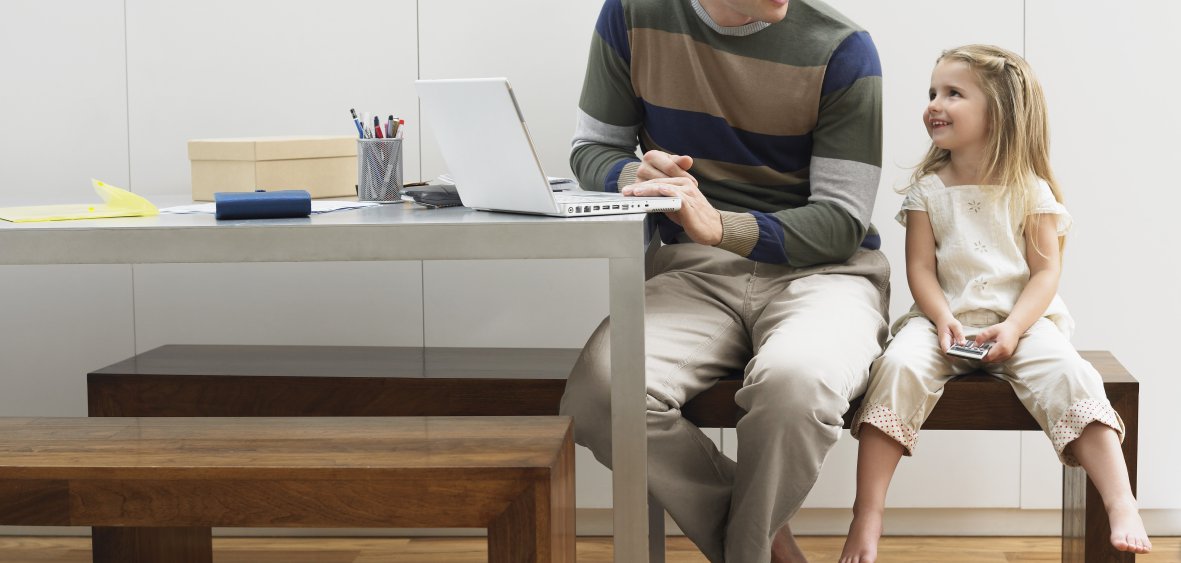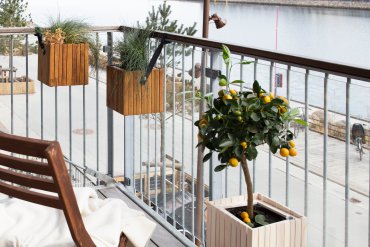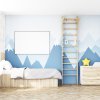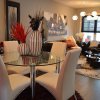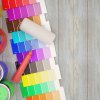It is best to paint the rooms from spring to autumn, when the humidity is not too high. Before we decide to buy painting accessories, we should make sure to make sure which surfaces and types of paint are suitable, so that we avoid smudging of paint.
It is best to start painting interiors by securing the furniture and equipment that it contains. Painting foil stuck to the floor with a tape is a good choice. The foil protected in this way will not interfere with the work, slipping off the furniture in the wind.
Painted interiors - what to avoid
Interior painting is not as easy as it might seem. It is not difficult to find errors that will make our work worse than it was before we started painting. Clear air, irregular strands or paint running down the wall are just some of the problems we may encounter on our way. If we care about the efficient refreshment of our interior and we want the effect to be stunning, let's ask for help from specialists. A professional finishing team will do their job quickly and with commitment. Specialists will not only refresh the walls and ceilings, but also secure the equipment and remove any remnants of the completed renovation.
However, when you start painting your own interiors, you should pay attention to a few factors that will affect the final appearance of the wall or ceiling.
- Unprepared substrate - before covering the wall with paint, take care of the surface you want to paint. We should first of all vacuum it and degrease it. If you notice cavities, you should fill them with plaster, then remove the peeling residues of old paint and paint the whole thing with primer.
- Poor quality materials - the success of our work also lies in the selection of the right tools and paints. Destroyed brushes can leave individual hairs on the wall. They will be visible when the surface is dry. Rollers are best suited for painting, which we choose according to the principle "the shorter the hair, the smoother the surface". When buying painting accessories - rollers, brushes or tapes - always read the labels on the packaging. There you will find information on which surfaces and paints they are suitable for.
- Incorrect application of paint is one of the most common problems when painting. We should remember that we apply paint from the top to the bottom on a dry wall. This will prevent blisters and adhesion loss. Let's try to avoid interruptions. We finish painting the wall when the whole surface is covered with paint.
Interior colours can optically change the size of the interior.
By choosing the colour of the walls, you can optically enlarge or reduce the interior. Bright, cool colors will make the space seem bigger. Satin paints, whose delicate shine will disperse the light well, will also add to the spaciousness. Large interiors can be reduced in size by painting them in dark or intense colours, e.g. red, brown or navy blue. By combining colours, we can easily lengthen our interiors by painting two larger walls in light tones and two smaller walls in dark tones. Colours in the interior should form a coherent whole with the interior design and character of the room. We should also remember that colours influence our emotions, e.g:
- blue - reduces stress and helps to relax,
- red - adds energy,
- beige - makes it easier to focus,
- yellow - gives the impression of warmth and safety,
- green - calms you down.
Also check
- March 14, 2022
Bei der Fällung eines Baumes ist die richtige Arbeitstechnik äußerst wichtig. Sie dienen dazu, sichere Arbeitsbedingungen zu gewährleisten und die Effizienz zu steigern. 1...
Read more- June 26, 2019
Own garden is a dream of many people. Relax in the greenery, silence, beautiful flowering flowers or fresh herbs.... Unfortunately, not everyone has the possibility to have...
Read more

